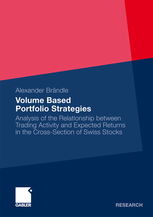Understanding the Relationship in Size Between Sand, Silt, and Clay
When it comes to soil composition, the relationship in size between sand, silt, and clay is a crucial factor that influences soil texture, structure, and fertility. These three components, often referred to as soil particles, play a significant role in determining how well the soil can retain water, support plant growth, and provide essential nutrients to plants. Let’s delve into the details of this fascinating relationship.
Size Classification

The size of soil particles is a critical factor in determining soil texture. Sand, silt, and clay particles vary in size, with sand being the largest, followed by silt, and clay being the smallest. Here’s a brief overview of their size ranges:
| Particle Size | Range (micrometers) |
|---|---|
| Clay | < 2 |
| Silt | 2 – 50 |
| Sand | 50 – 2000 |
These size differences result in distinct physical and chemical properties for each soil particle type, which in turn affect soil structure and plant growth.
Physical Properties

The physical properties of soil, such as texture, structure, and porosity, are directly influenced by the size of its particles. Here’s how sand, silt, and clay particles contribute to these properties:
- Sand: Sand particles are large and have a rough texture. They allow for good drainage and aeration, which is beneficial for plant roots. However, sandy soils tend to have poor water retention and nutrient holding capacity.
- Silt: Silt particles are smaller than sand but larger than clay. They have a smooth texture and can improve soil structure, making it more friable. Silt soils have moderate water retention and aeration properties.
- Clay: Clay particles are the smallest and have a very fine texture. They can absorb and retain water and nutrients more effectively than sand or silt. However, clay soils can become compacted, reducing aeration and drainage, which can hinder plant growth.
Chemical Properties

The chemical properties of soil, such as pH, nutrient availability, and cation exchange capacity, are also influenced by the size of its particles. Here’s how sand, silt, and clay particles contribute to these properties:
- Sand: Sand particles have a low cation exchange capacity, which means they can hold onto fewer nutrients. This can lead to nutrient deficiencies in sandy soils.
- Silt: Silt particles have a moderate cation exchange capacity, which allows them to hold onto some nutrients. Silt soils can be more fertile than sandy soils but may still experience nutrient deficiencies.
- Clay: Clay particles have a high cation exchange capacity, which means they can hold onto a large number of nutrients. This makes clay soils more fertile but can also lead to nutrient lockup, where nutrients are not available to plants.
Soil Texture and Plant Growth
The relationship in size between sand, silt, and clay particles significantly impacts soil texture and, consequently, plant growth. Here’s how soil texture affects plant growth:
- Water Retention: Soils with a higher proportion of clay particles tend to retain more water, which can be beneficial during dry periods. However, excessive water retention can lead to root rot and other plant diseases.
- Aeration: Soils with a higher proportion of sand particles tend to have better aeration, which is essential for root respiration and nutrient uptake. However, sandy soils may have poor water retention and nutrient holding capacity.
- Nutrient Availability: Soils with a balanced proportion of sand, silt, and clay particles can provide optimal conditions for nutrient availability and plant growth. This balanced texture allows for good water retention, aeration, and nutrient holding capacity.
In conclusion, the relationship in size between sand, silt, and clay particles is a critical factor in determining soil texture, structure, and fertility. Understanding this relationship can help